Starting a lifestyle blog is a great way to document your life, connect with like-minded people, and even make some money along the way.
In this guide, you will learn how to start a lifestyle blog in 2025. You will learn how to choose your lifestyle blog’s niche, create a site in WordPress, write blog posts, promote your blog to get traffic, and monetize your lifestyle blog to make money.
By the end of this guide, you will be able to build a successful lifestyle blog from scratch. If you have any questions along the way, just drop a comment and I will help you out.
So let us jump right in.

How to Start a Lifestyle Blog in 7 Steps
- Define Your Lifestyle Blogging Goals
- Choose a Lifestyle Niche
- Pick & Register a Blog Domain Name
- Setup WordPress
- Write & Publish Blog Posts
- Promote Your Lifestyle Blog
- Monetize & Make Money
1. Define Your Lifestyle Blogging Goals
The first step in starting a lifestyle blog is to define your goals.
What do you want to achieve with your lifestyle blog?
- Are you looking to document your life for friends and family?
- Are you hoping to connect with like-minded people?
- Or are you interested in making some money from your successful blog?
Your answer to this question will determine the direction of your blog and the type of content you publish.
If you’re just starting out, it’s ok to not have specific goals in mind. But as you begin to grow your blog, it will be important to revisit this question and define some concrete goals for your blog.
What is a Lifestyle Blog?
A lifestyle blog is a blog that covers the topics of daily life, which might include personal style, beauty, home décor, DIY projects, travel, food, and recipes. Lifestyle blogs are usually written by regular people (rather than celebrities or experts), and they offer a more personal perspective on the topics they cover.
Why Start a Lifestyle Blog?
There are many reasons why you might want to start a blog.
Some people start lifestyle blogs as a way to document their lives and connect with friends and family. Others use their lifestyle blog as a platform to share their interests and hobbies with the world.
And for some people, a lifestyle blog is a way to make money by sharing their personal experiences, knowledge, and recommendations with an audience.
The benefits of starting a lifestyle blog include:
- Allowing you to connect with like-minded people from all over the world
- Giving you a platform to share your interests, experiences, and knowledge
- Helping you develop new skills and knowledge
- Allowing you to make money by monetizing your blog
If any of these benefits appeal to you, then a lifestyle blog might be the right platform for you.
No matter what your reasons are for starting a lifestyle blog, know that you can achieve your goals if you’re willing to put in the work.
How much money can you make from lifestyle blogging?
Assuming each blog post gets 1000 page views per month, the median ad income of a blog with 100 posts will be around $2815 per month. Your income potential will be higher if you have more blog posts or more traffic per blog post. You can also make more money if you monetize with affiliate marketing and digital products. The lifestyle blog Anna In The House made $10,287.61 in a single month.
2. Choose a Lifestyle Niche
The next step is to choose a lifestyle blog niche for your lifestyle blog. Your niche will be the focus of your blog and will determine the type of content you publish.
Why choose a lifestyle niche?
If you blog about everything, you will be competing with everyone and it will be difficult to stand out. But if you focus on a specific niche, you can become the go-to source for information on that topic.
Choosing a lifestyle niche will help you:
- Stand out in a saturated market
- Connect with a specific audience
- Build a loyal following
- Make money from your blog
Finding Your Ideal Niche
If you’re struggling to come up with a niche for your blog, here are some questions to ask yourself:
- What do I enjoy doing in my free time?
- What am I passionate about?
- What do I have experience with?
- What do I know a lot about?
- What do people come to me for advice on?
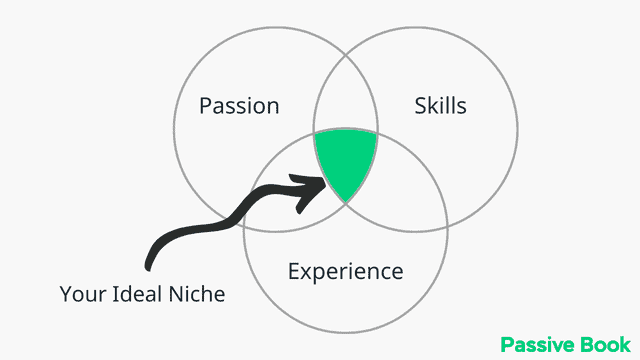
Your answers to these questions will help you identify potential niches for your blog. For example, if you love to cook, your blog could be about food and recipes. Or if you’re passionate about fashion, your blog could be about personal style and fashion trends.
When choosing a niche, it’s important to pick something that you’re interested in and that you can see yourself blogging about for a long time. This will help you stay motivated and consistent with your content.
Some popular lifestyle niches include:
- fashion
- beauty
- travel
- parenting
- food
- health & fitness
- home décor
- DIY projects
Each of these niches can be further broken down into sub-niches. For example, health & fitness can be niched down to yoga. Yoga can be further niched down to beginner yoga, and so on.
The more specific you can be with your niche, the easier it will be to stand out and connect with your target audience.
Examples of Lifestyle Blogs
Sometimes looking at other lifestyle blogs will help inspire ideas of your own. Here are some of the more popular lifestyle blogs:
[auto-list-number] Cupcakes & Cashmere
Emily Schuman created this blog to document the things that she loves and the blog covers lifestyle, fashion, travel, and beauty.

[auto-list-number] Wit & Delight
Kate Arends started her blog as a way to share the things she was passionate about. The blog has lifestyle content covering topics like design, entertainment, motherhood, and more.

[auto-list-number] The Everygirl
Maria Menounos started The Everygirl as a way to help educate, inspire, and empower women. The blog covers topics like career, money, travel, beauty, style, and more.
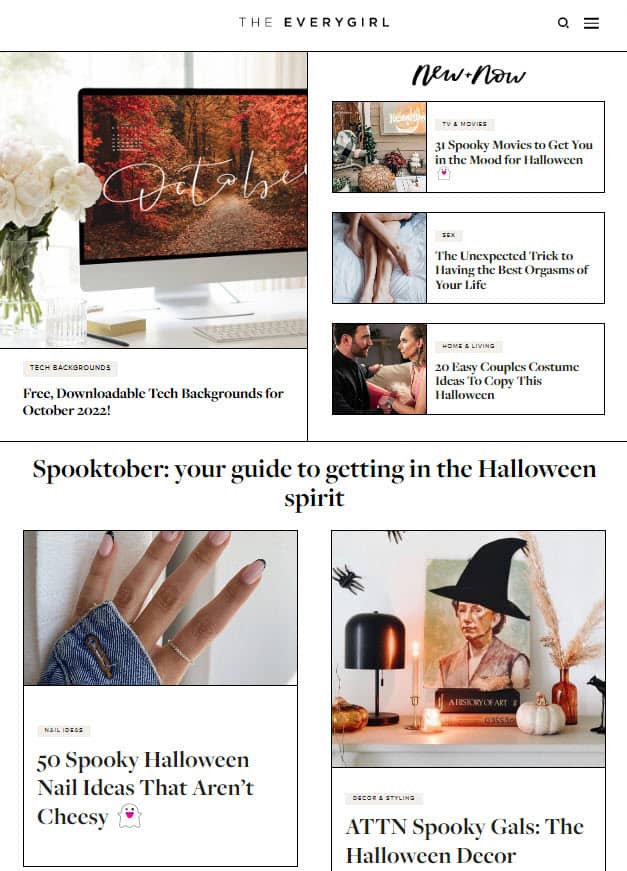
[auto-list-number] A Beautiful Mess
Elsie Larson and Emma Chapman created A Beautiful Mess as a way to share their DIY projects and recipes with the world. The blog has since evolved to cover a variety of lifestyle topics like fashion, beauty, home décor, and more.
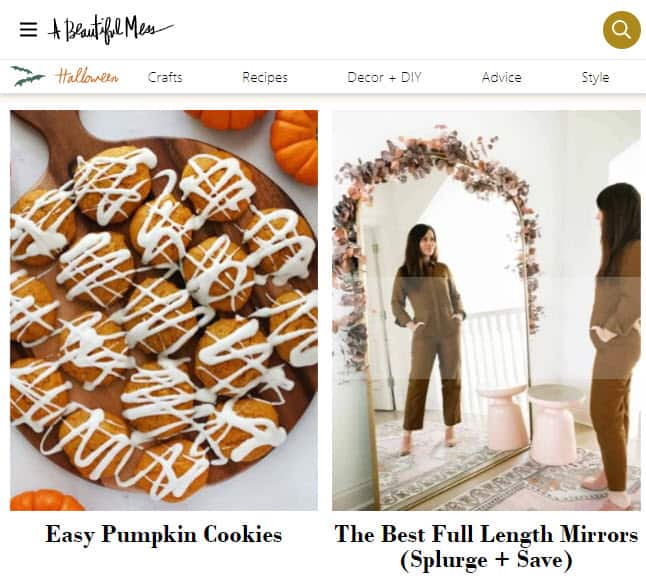
[auto-list-number] Camille Styles
Camille Styles is from Austin, Texas. She presents a refreshing and innovative perspective on lifestyle, fashion, and home decor. Along with her dedicated team, she manages her vibrant lifestyle blog, where she shares her unique insights and concepts on wellness, food, design, style, and travel. Camille is acclaimed as the author of the bestseller “Camille Styles Entertaining,” showcasing her expertise in the art of hosting and creating delightful experiences.

[auto-list-number] Wellness Mama
Katie Wells started Wellness Mama as a way to share her journey to better health. The covers wellness information covering topics like nutrition, fitness, recipes, natural remedies, and more.
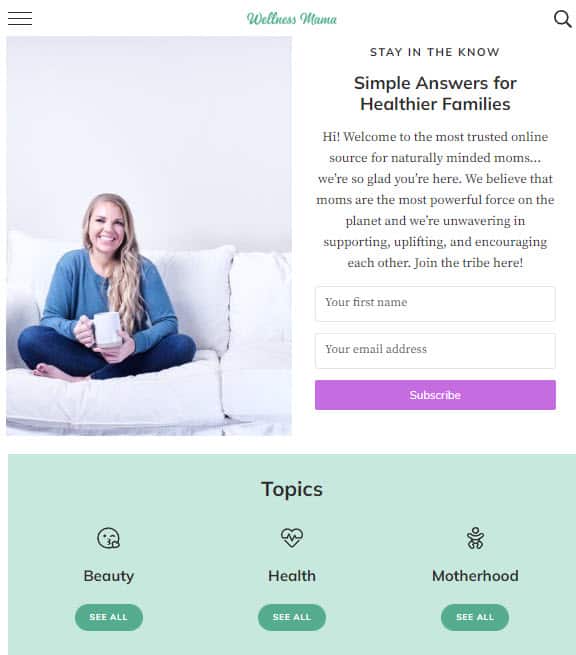
Check if Your Niche Is Profitable
Once you’ve chosen a niche for your blog, it’s important to make sure that it’s profitable. There are a few ways to do this:
- Look at other blogs in your niche. Are they making money? How are they monetizing their blog?
- Research your niche. What type of products and services are people in your niche buying?
- Check out affiliate programs. Do companies in your niche offer affiliate programs?
If you can’t find any evidence that people in your niche are spending money, it is likely your niche is not profitable. In this case, you may want to consider choosing a different niche.
3. Pick & Register a Blog Domain Name
Once you have chosen your niche, it is time to brainstorm a few names for your lifestyle blog.
We recommend you keep your blog’s name to two words (Example: Wellness Mama). One of the two words should be a keyword from your niche. The other word can be something that makes your website brandable. For example, our blog teaches people how to make passive income, so we have named it Passive Book.
Here are some of the words that you can mix and match into your blog name:
- Life
- Living
- Style
- Girl
- Guy
- Mom
- Dad
- Travel
- Fitness
- Food
- Beauty
- Wellness
- Nomad
- Junkie
- Food
- Wellness
- Travel
Use a Business Name Generator to brainstorm the name of your blog.
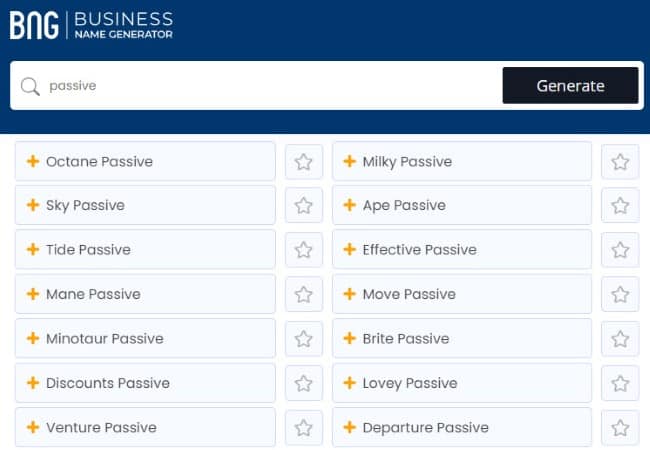
You can also use your own name for your blog. But if you ever plan to sell your website in the future, it is much more difficult to transfer your brand to the buyer when it is your name.
Check Domain Name Availability
After you have brainstormed a few names for your lifestyle blog, you should check if the .com domain name is available.
Your domain name is your blog’s address on the internet. It’s how people will find your blog when they type in your blog’s name into their web browser. For example, our domain name is PassiveBook.com.
You must check if both the .com domain name and the social media handles are available. You can use Namechk to check the availability of both your domain name and social media handles.
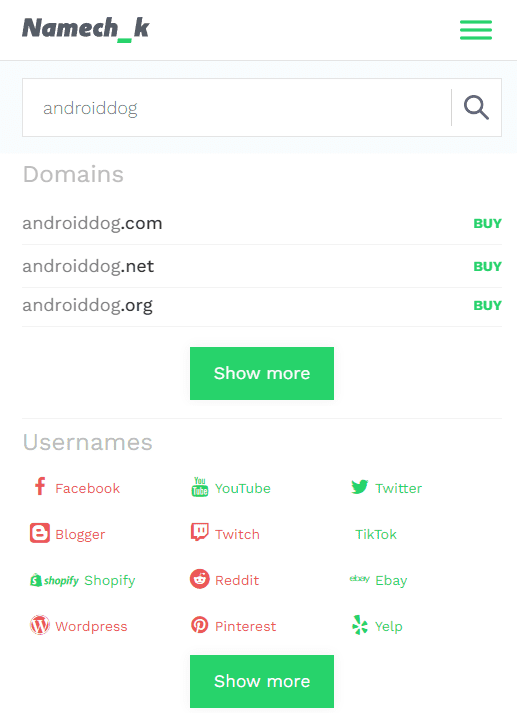
Here are a few things to keep in mind when selecting a domain name:
- Choose a .com domain name. 86% of the internet uses .com, so your visitors are likely to try visiting your blog by typing .com. Avoid other extensions like .net or .org.
- Don’t include hyphens and numbers.
- Do not use words with multiple spellings (for example colour vs color).
- Shorter domain names are better. Try to keep it under 12 characters.
- Spelling & Pronunciation should be easy and intuitive.
- It should be easy to remember.
- Avoid words that can be misread together. For example, therapistjohn.com can be read as Therapist John or The Rapist John.
- Make sure it’s not trademarked or copyrighted by someone else. The AI writing software Jarvis.ai had to rebrand to Jasper.ai because Marvel sued them for the Iron Man reference. Lawsuits will happen once your blog is established.
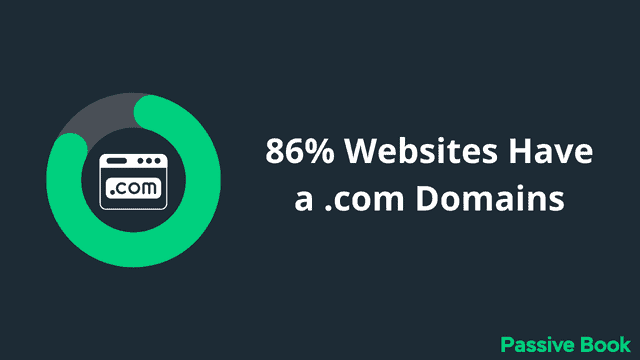
Register a Domain Name
Once you decide your domain name it is time to register it.
You should register your domain with NameCheap because you will get domain privacy for free. Other providers charge $12 per year for domain privacy. Without domain privacy, your name, home & email address will be accessible to the public.
Step 1: Go to NameCheap. Enter your domain name with the .com extension.
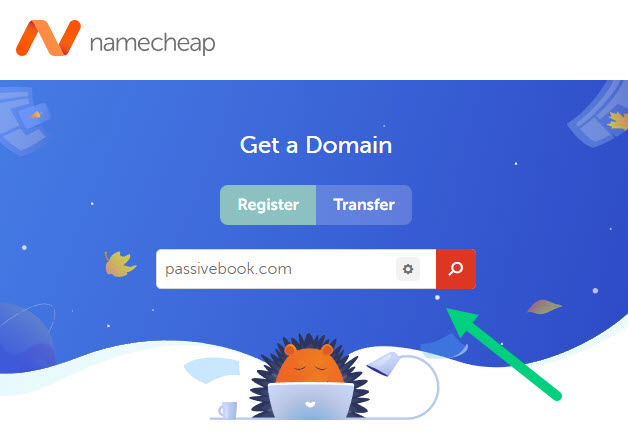
Step 2: Select the .com extension and click the Add to Cart button.
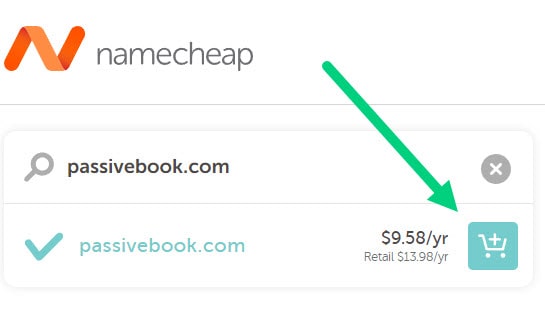
Step 3: After adding the domain to the cart, click on the Checkout button.
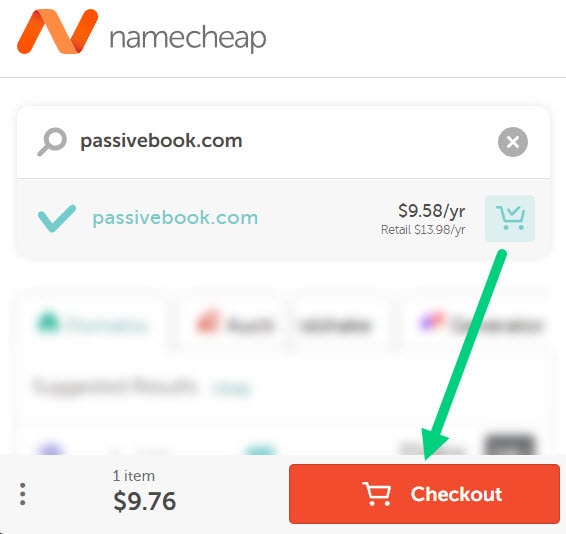
Step 4: Enable Domain Privacy that comes for free along with auto-renew. You don’t need any other paid addon.
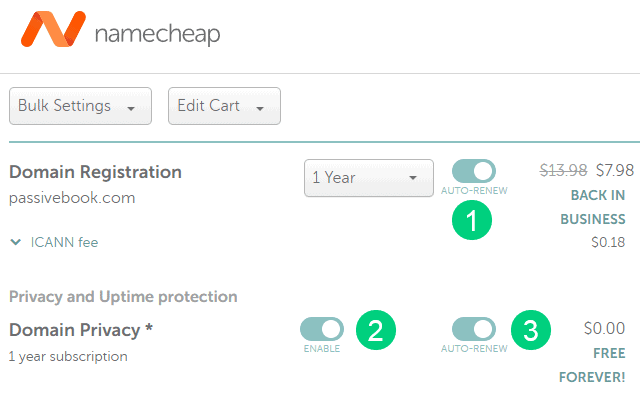
Step 5: Click on Confirm Order. Pay to complete your purchase.

Step 6: Log in to Namecheap and click on Domain List ❶ in the left sidebar and then click Manage ❷ next to the domain you just purchased.
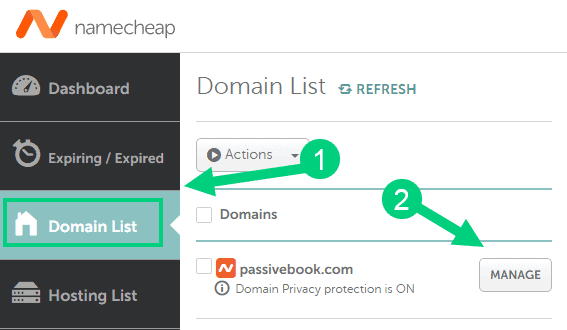
Step 7: Under the Nameservers section, select “Custom DNS” from the dropdown ❶. Then enter the following two nameservers ❷ ns1.bluehost.com and ns2.bluehost.com as shown in the image. Then click the green tick ❸ to save. If you use a hosting provider other than Bluehost, enter their nameserver values in this step instead.
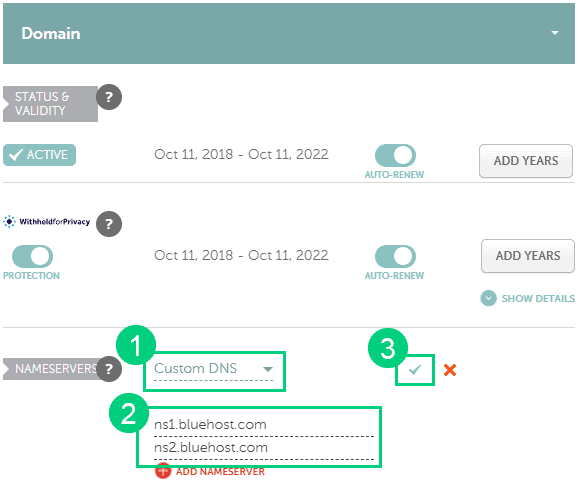
Can I get a free domain name?
Your web hosting provider might give you a free domain name for one year but they charge $12 for domain privacy which is free in Namecheap. From the second year, you will pay for both the domain and privacy which will cost you more than $20+. So it is cheaper to just register your domain with Namecheap from the beginning. Also using different companies for web hosting and domain registration will allow you to easily switch your blog host later without transferring domains.
Can I change the name of my blog later?
You will lose your search engine rankings if you change your blog’s name once it gets links from other websites. It will take as long as a year or more for you to regain the lost traffic. It is possible to mitigate problems by having proper redirects. But you will have to renew both your old and new domains every year. So try to avoid changing your blog’s name once it is established.
4. Setup WordPress
Now that you’ve chosen a domain name for your lifestyle blog, it’s time to set up WordPress. WordPress is a content management system (CMS) that helps you easily create and manage your blog.
Why Choose WordPress.org?
While there are other CMS options available, WordPress is the most popular, used by over 70% of blogs on the internet. 42% of all websites on the internet use WordPress.

Here are some of the reasons why we recommend WordPress for your lifestyle blog:
- It’s free to use. You just need to get your own hosting and a domain name.
- It’s easy to set up and use, even if you are a non-technical person.
- There is a huge community of WordPress users and developers around the world who can help you with problems or questions that you have.
- It’s constantly being updated and improved with new features.
- There are thousands of themes and plugins available to help you customize your blog and add new features.
WordPress.org vs WordPress.com
Before we show you how to set up WordPress, it’s important to understand the difference between WordPress.org and WordPress.com.
WordPress.org is a self-hosted platform, which means that you need to get your own hosting and domain name to use WordPress.org. With self-hosting, you have full control over your website and can do whatever you want with it.
WordPress.com is a hosted platform, which means that WordPress will host your website for you. You don’t need to get your own hosting or domain name. But because WordPress owns your website, they put some limitations on what you can and cannot do with your website.
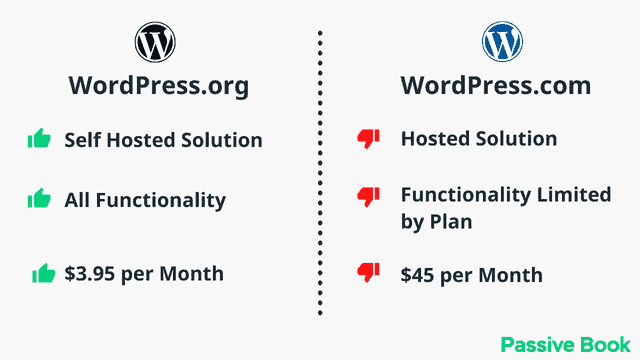
For example, with WordPress.com, you cannot install plugins or themes. And you can only use a limited number of ads on your website.
If you want to make money from your blog, then you should use WordPress.org, not WordPress.com. So in this guide, we will be showing you how to set up WordPress.org for your lifestyle blog.
Why Avoid Free Blogging Platforms
There are many free blogging platforms that you can use to start a new blog, such as Blogger, Medium, and Tumblr.
While these platforms are easy to use and don’t cost anything to get started, we don’t recommend using them for your lifestyle blog.
The reason is that you don’t own your website on these platforms. So if they decide to shut down or change their terms of service, then you could lose your entire blog.
For example, in 2018 Tumblr decided to ban all adult content from their platform. As a result, many bloggers who had been using Tumblr to run adult blogs lost their entire businesses overnight.
Blogger blogs are also known to delete blogs without any real reason.

It is also difficult to drive traffic and monetize your blog on these free platforms.
So if you are serious about starting a lifestyle blog and making money from it, then you should use WordPress.org, not a free blogging platform.
How much does it cost to start a lifestyle blog?
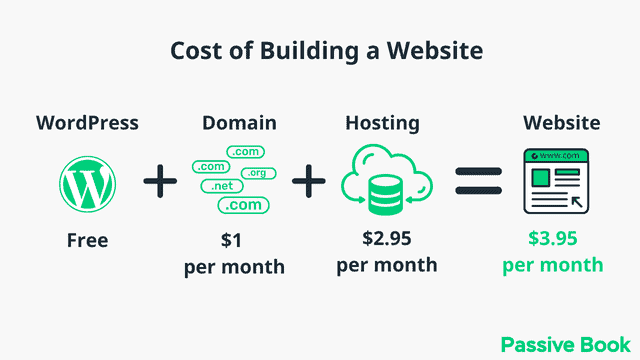
It will cost you $2.95 per month to host your WordPress lifestyle blog in Bluehost. A domain will cost you $12/year. So that is a total of $4.2 per month, which is less than the price of Netflix for all the unlimited features that a self-hosted WordPress blog has to offer.
What to do if you already have a free blog?
If you already have a free blog, you can use a WordPress import plugin to move your blog content over to WordPress. There are several plugins available, such as Blogger to WordPress and Tumblr to WordPress. These plugins will copy all your blog posts, images, and comments from your free blogging platform
Install WordPress in Hosting
First, you need to get hosting to install WordPress. Web hosting is a computer (aka server) on the internet that stores the data and files of your lifestyle blog. When someone visits your lifestyle blog, data is transferred from your web hosting server to your visitor’s browser.
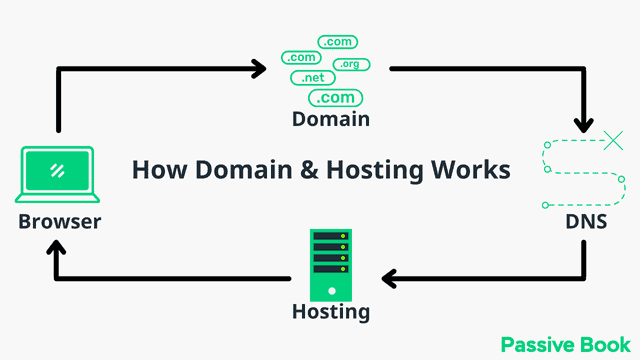
For this guide, we will use BlueHost as our web host. It is a cheap hosting that is extremely easy for beginners to set up. If you use any other web host, the steps will be the same but the user interface may be slightly different.
1. Go to BlueHost using this link to get a special discount. Select WordPress > WordPress Hosting from the top menu.
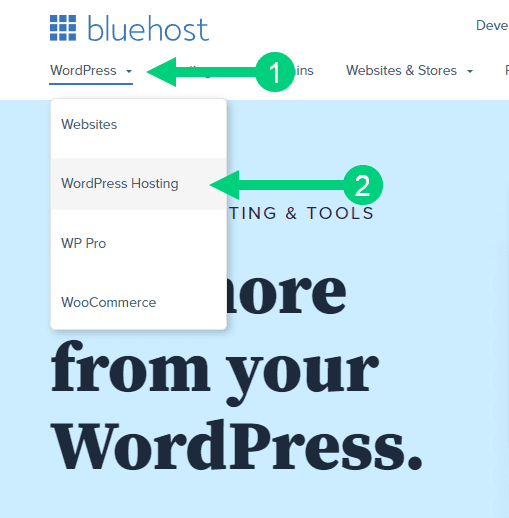
2. Click on the button you see on this page and you will be taken to the pricing section.
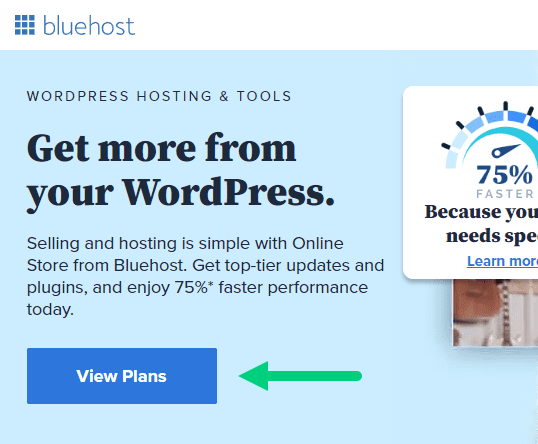
3. Select the Basic Plan. You can upgrade to a different hosting plan as you grow.

4. If you already have a domain name that you purchased with Namecheap you can put that in the “Use a domain you own” ❶ section. If you don’t have a domain name yet, choose the “Create a New Domain” ❷ to purchase a new domain.
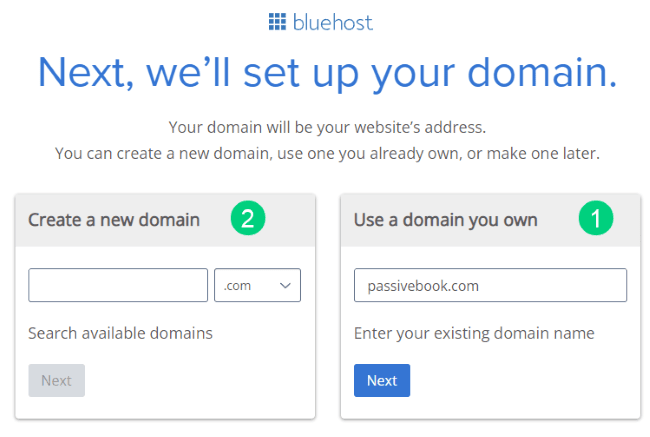
5. In the next screen, enter your information. Uncheck all package extras. If you purchase your domain through Bluehost instead of Namecheap, you may want to enable Domain Privacy. You won’t see the Domain Privacy option if you bought your domain through Namecheap. Namecheap will give you this Domain Privacy for free.
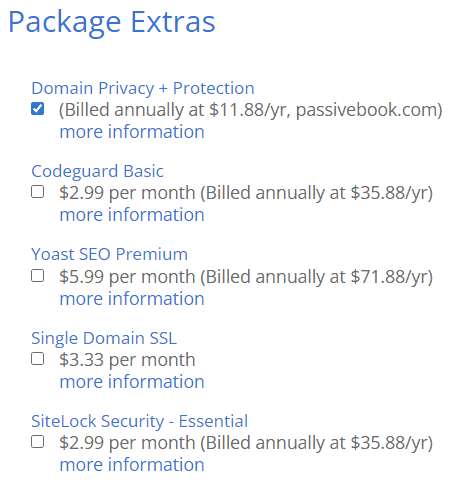
6. Once you have successfully paid, you will be prompted to set a password. Click on the “Create your Password” button.
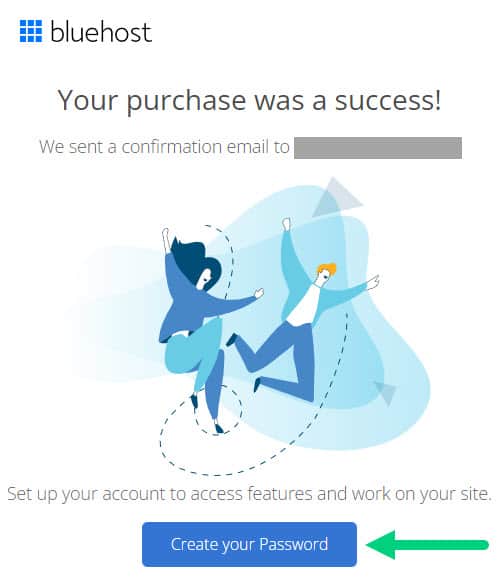
7. Enter your password and create your account. If you lose this password, you can reset it.
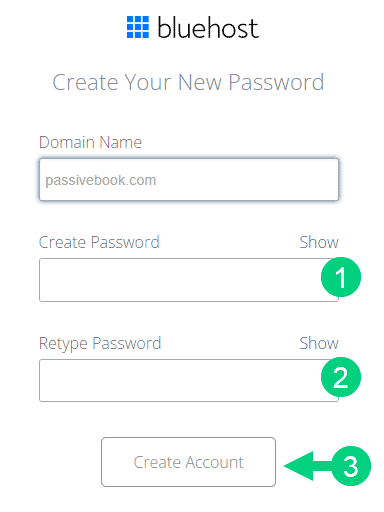
8. After you set your password, log in to Bluehost.
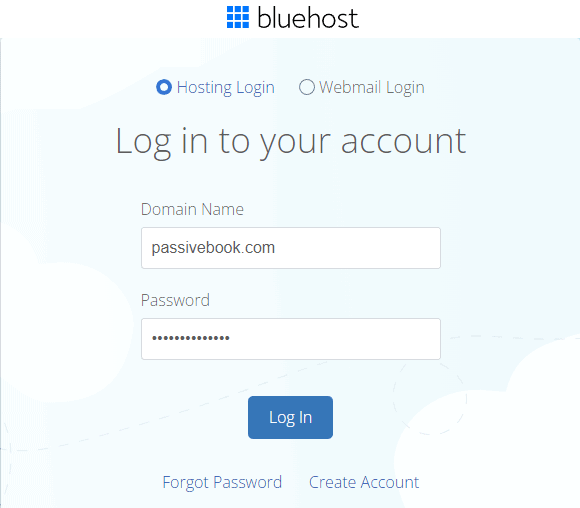
9. Click on the Create your website button on the following screen. This will start a Bluehost Wizard, just click Skip this step wherever possible.

10. On the following page, click “No help needed” or “Skip this step”. We don’t want Bluehost to limit our customization options.
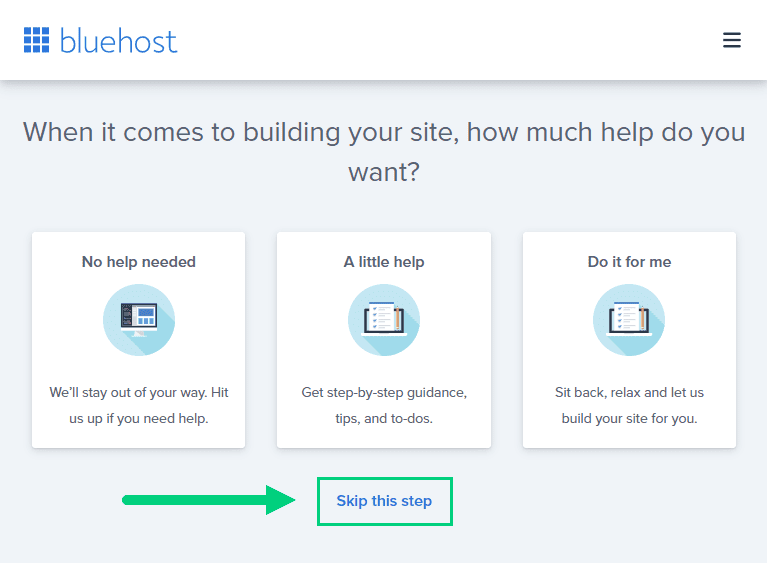
11. On the next page, you will be asked about the purpose of your website. You can choose from any of the available options.
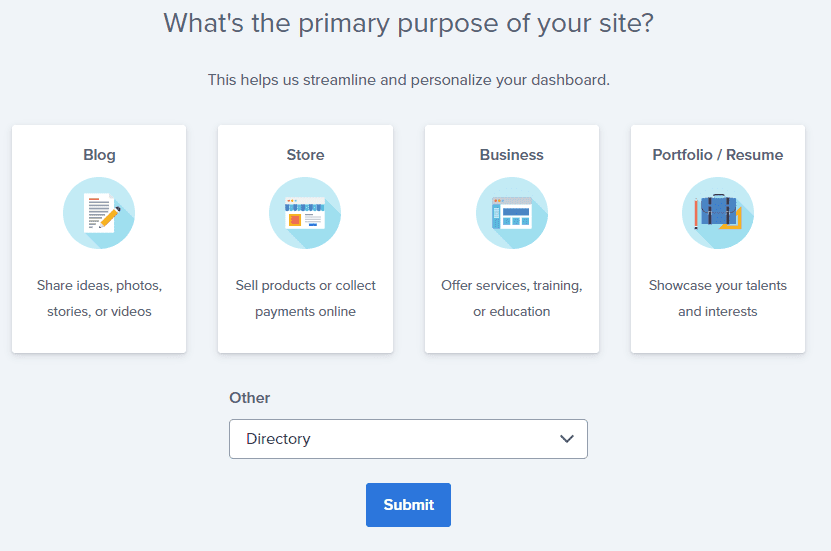
12. On the next page, click Skip this step.
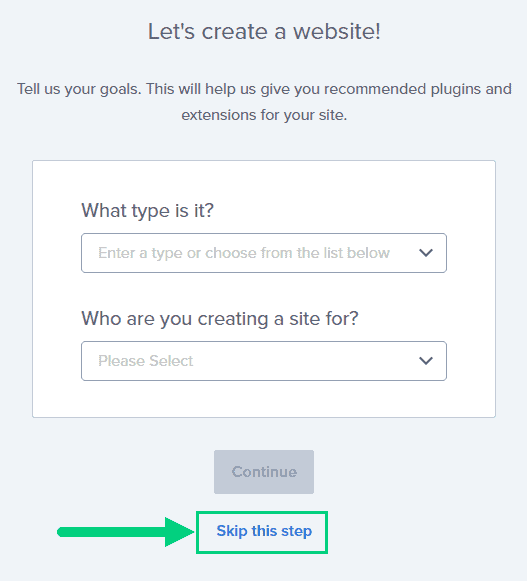
13. On the following page, enter the blog’s name and tagline. You can change this later so feel free to click “Skip this step” or enter something as a placeholder and click Continue.
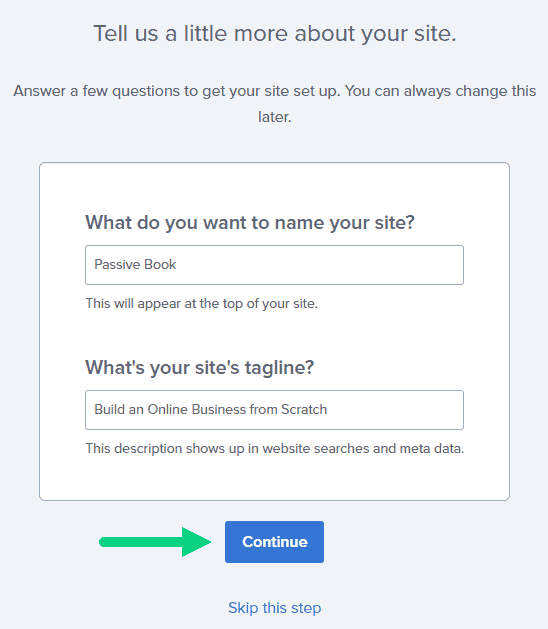
14. Finally you will be asked how you want to build your website. Choose “Limitless customization” to have all the options.

15. You can see your blog by going to yourdomain.com. Go to the Bluehost dashboard and click on the My Sites tab ❶ in the left sidebar and click on the “Manage site” button ❷.
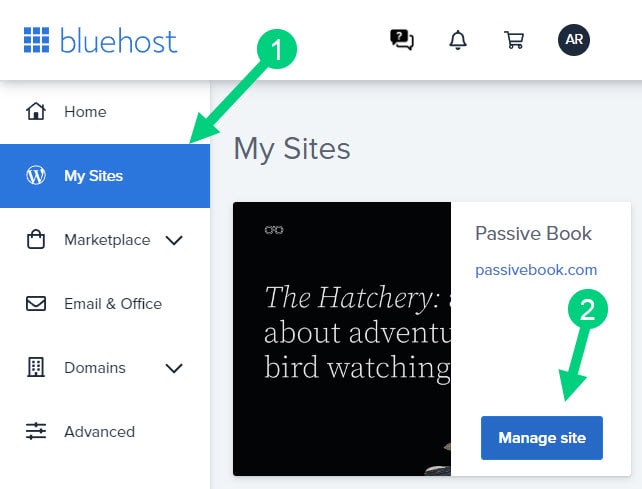
16. Your WordPress site has separate login credentials different from the ones you use to log into Bluehost. You can use this to log in to the WordPress dashboard directly without logging into Bluehost. To get this:
❶ Click on Users on top.
❷ You will be able to see your username and email that you can use to log in to WordPress.
❸ If you click on the three dots you will see the option to Reset your password. ❹
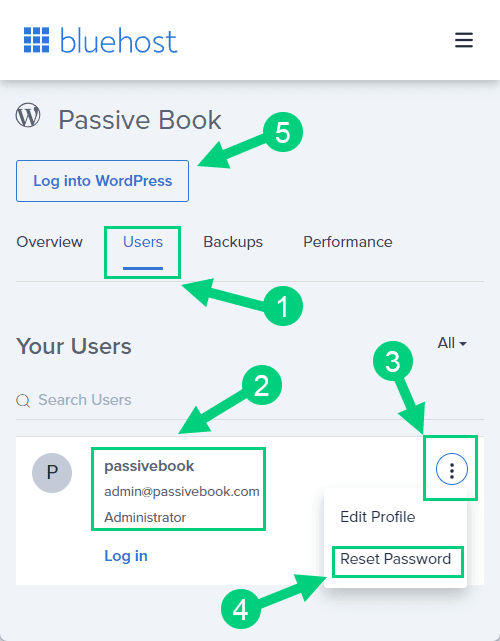
You can log into WordPress from the Bluehost dashboard by clicking the Log in to WordPress button ❺. But it is not recommended you rely on this as your primary login method because you will get locked out of your site if you ever change hosting providers.
17. You will be taken to the WordPress dashboard where you can reset your password ❶. If you don’t like the username Bluehost created for you, you can Add a New User ❷.

18. If you are adding a new user make sure you specify the user role as Administrator ❶. You can log in as the new user and safely delete the default user created by Bluehost.
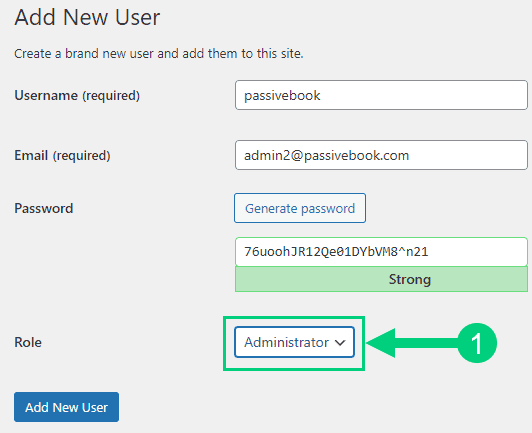
Congratulations! You have successfully set up WordPress.
Configure WordPress
Now that you have the basic version of WordPress installed, it is time to customize it to make it look and feel the way you want.
Login to WordPress Dashboard
The WordPress Dashboard is the area where you manage your WordPress site. You can access the dashboard by visiting yourdomain.com/wp-admin. The dashboard contains all the tools and settings you need to manage your website.
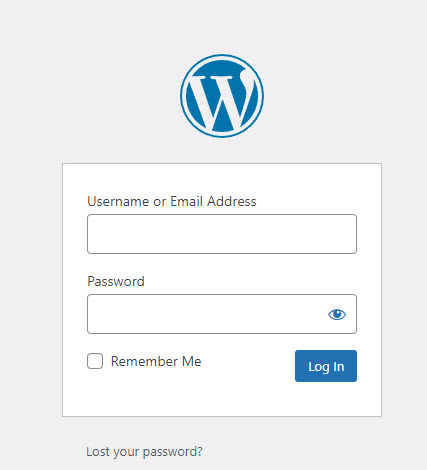
Use the Email and Password you provided during installation to log in to your WordPress dashboard. If you don’t have a password, use the “Lost your password?” to generate a new password.
Install WP Themes
A WordPress Theme is a collection of files that tells WordPress how to display your website. It includes the look and feel of your website, the fonts, colors, and layout.
There are many free and premium WordPress themes available. You can find free themes on the WordPress Theme Directory, or you can purchase a premium theme from an external website and upload it.
Your new WordPress blog will be installed with a default blog theme that doesn’t look very great.
To install a new WordPress Theme:
Go to Appearance > Themes > Add New in your WordPress dashboard.
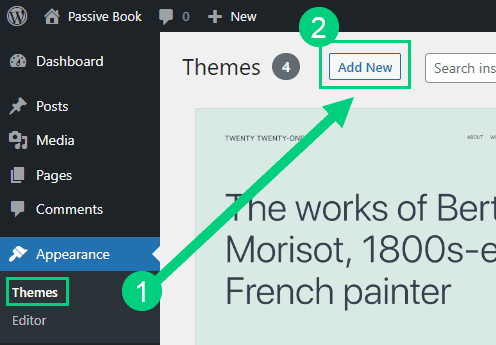
Use the search to find a theme that you like ❶. Before you install the theme, you can see a demo of the theme and learn about its features from the preview screen ❷. If you like the theme, you can install it by clicking the install button ❸. You can also upload a theme from a file on your computer ❹.
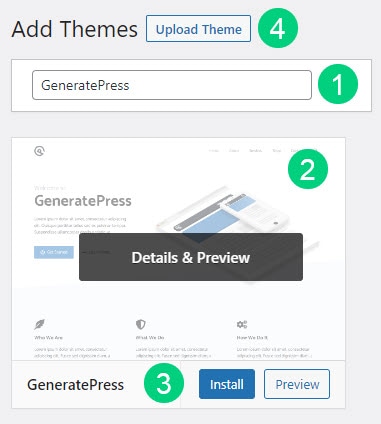
Once installed, click the Activate button to enable the theme.
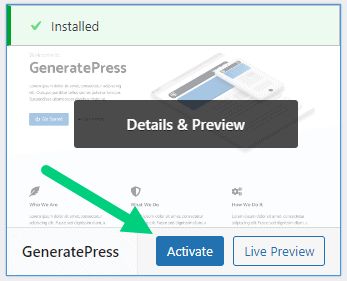
Although you can use a free theme (there are thousands of free themes available), we recommend using a premium theme.
Premium themes not only reduce your website’s load time but also helps you customize your website to your heart’s desire.
Here are the premium themes we recommend:
There are also several themes custom-made for lifestyle blogs. These themes tend to be bloated with poor code which will slow down the performance of your website. We suggest getting one of our recommended themes for a fast website with unlimited customization possibilities.
Install WP Plugins
A WordPress Plugin is a software program that extends the functionality of WordPress. It can add new features to your website, and it can improve the performance of your website.
Too many wordpress plugins can slow down your blog site. So before you install new plugins, it will be worth clearing out any existing plugins that your hosting provider installed by default.
Plugins first need to be deactivated before they can be deleted.
❶ Go to WP Admin > Plugins > Installed Plugins
❷ Click on the checkbox to select all plugins.
❸ Select Deactivate from the drop-down.
❹ Click Apply.
❺ Repeat the above steps but select “Delete” instead of “Deactivate” from the dropdown in ❸ to delete all the deactivated plugins.
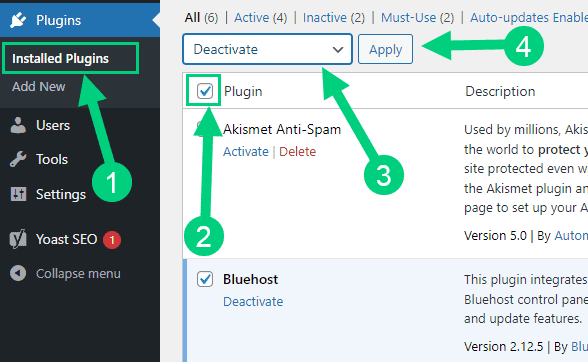
To install new plugins go to the WP Admin > Plugins > Add New.
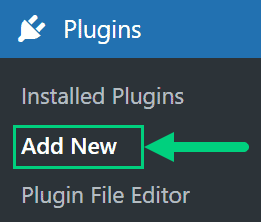
On the plugins page:
❶ Search for the plugin you want in the search bar
❷ Click Install Now. Once you install the plugin, you must also activate the plugin for it to be enabled.
❸ If you are installing a paid plugin you can upload the plugin instead.
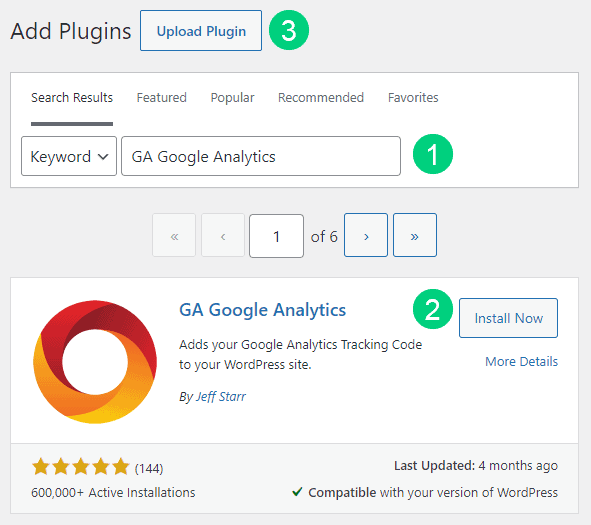
There are many different plugins that you can install, but here are the ones which we recommend:
Backup Plugin: A WordPress Backup Plugin creates backups of your website. This plugin can be used to create backups of your website’s files, databases, and/or images.
Recommended Plugin: WPVivid (paid) or UpdraftPlus (free).
SEO Plugin: A WordPress SEO Plugin helps you improve your website’s search engine ranking. It can help you add metadata, titles, and descriptions to your website; optimize your website for keywords; and improve your website’s readability.
Recommended Plugin: RankMath (paid).
Google Analytics Plugin: A WordPress Analytics Plugin helps you monitor your website’s traffic and performance. It can help you track your website’s visitors, page views, and engagement.
Recommended Plugin: RankMath (paid) or GA Google Analytics (free).
Cache Plugin: A WordPress Cache Plugin helps improve the performance of your website. It does this by caching your website’s files so that they can be accessed faster and more easily.
Recommended Plugin: WP Rocket (paid).
Page Builder Plugin: A WordPress Page Builder Plugin helps you create custom pages and posts for your website. It allows you to drag and drop elements, such as text boxes, images, and buttons, onto the page and then edit them.
Recommended Plugin: Thrive Architect (paid).
Security Plugin: A WordPress Security Plugin helps you protect your website from hackers and malware. It can help you add security features to your website, such as two-factor authentication and malware scanning.
Recommended Plugin: Wordfence (free).
Social Media Plugin: A WordPress Social Share Plugin helps you share your website’s content on social media platforms, such as Facebook, Twitter, and LinkedIn.
Recommended Plugin: Easy Social Share Buttons (paid).
Customize WordPress
Once you have installed your theme and plugins, it is time to customize the wordpress blog platform:
Change Colors, Fonts & Spacing
You can set the font, colors, and spacing by going to Appearance > Customize in your WordPress dashboard. Premium themes like GeneratePress allow you to customize every aspect of your blog.

Check out our Blog Fonts & Typography guide to choose the right font and typography settings for your blog.
Add Your Logo
Get a logo designed for your blog from Fiverr. Then set the logo of your blog by going to Appearance > Customize in your WordPress dashboard. A logo is not required for a successful blog but it can definitely help appeal to your target audience.
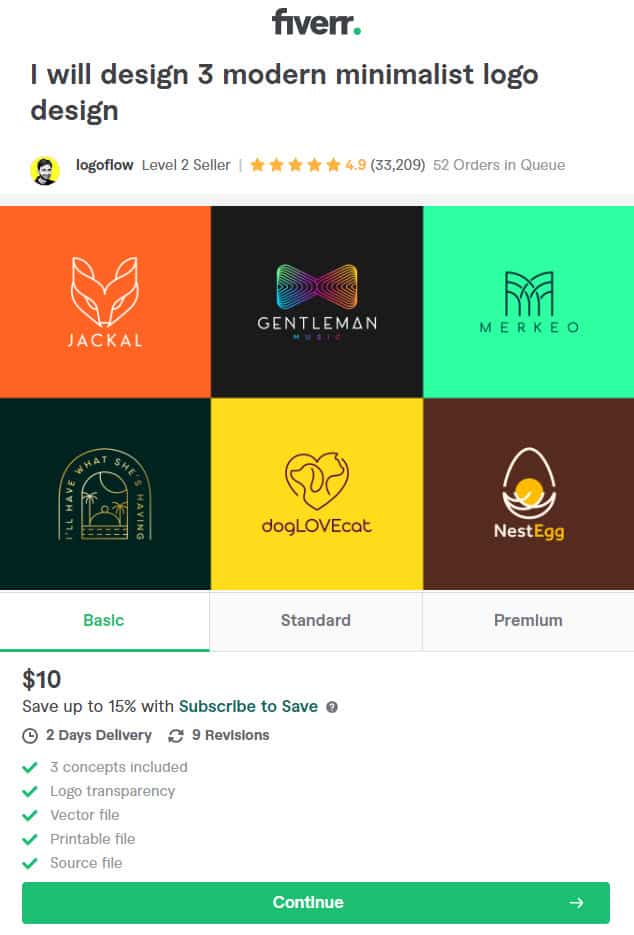
Change Favicon
Favicon is the image that appears in the browser tab and bookmarks. Set the Favicon from the Appearance > Customize section of the WordPress dashboard.

Create Menus
The header and the footer menu can be set from the Appearance > Menus in your WordPress blog dashboard.
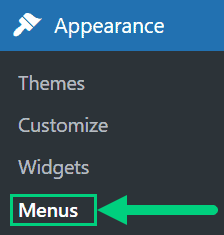
You can nest menu items so that it appears as a dropdown menu ❶. You can use the menu as your primary or secondary navigation menu ❷. Don’t forget to save your menu ❸.
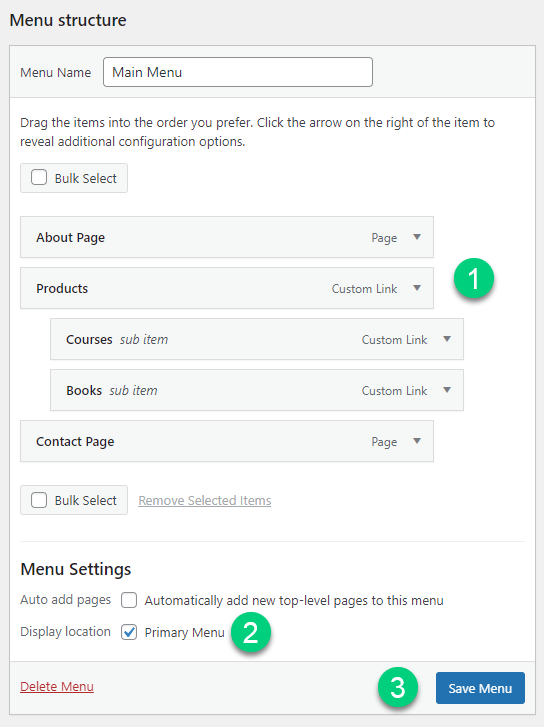
Create Widgets
If you have a sidebar, you can add widgets to it. Go to Appearance > Widgets in your WordPress admin dashboard.
Check out the list of the most useful Blog Widgets and how to add them to your blog.

Set Title & Tag Line
The next step is to change your General Settings. Go to Settings > General in the WordPress Admin area.
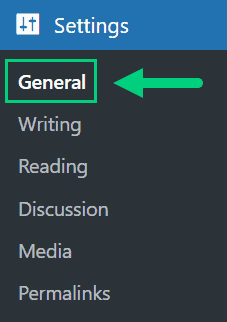
You can set your Site Title, Tagline, and Time Zone from this screen.
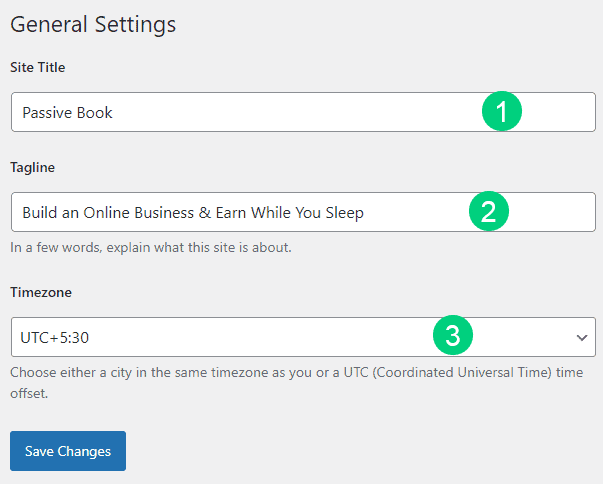
Set Permalinks
The ideal URL structure for SEO is yourdomain.com/sample-post. Set your permalink structure by going to Settings > Permalinks in your WordPress blog dashboard.

Select the “Post name” radio button and save changes.
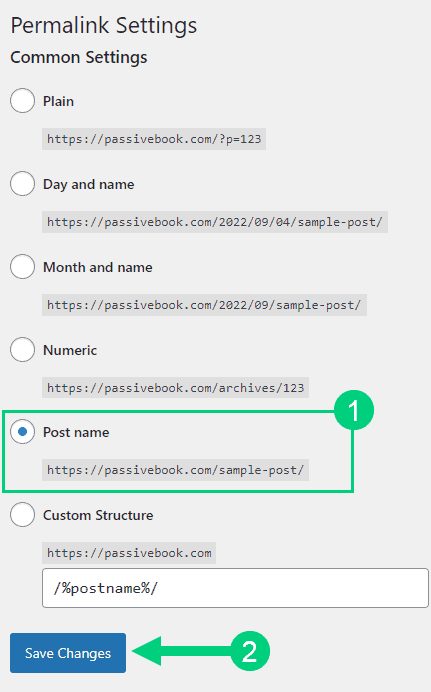
Enable Search Visibility
Chances are you want your blog to show up on Google so people can find you. Go to Settings > Reading in your WordPress dashboard.
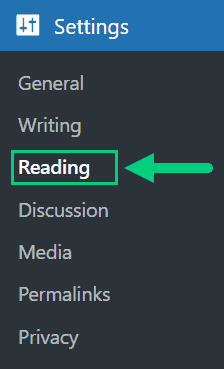
To get search engine traffic, ensure the checkbox “Disable search engines from indexing this site” is Unchecked. You can find this option in Settings > Reading. Most of the time this should be unchecked by default but if it is not, then uncheck it to ensure your site gets traffic from search engines.
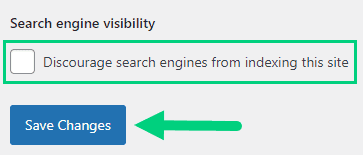
Adjust Comment Settings
Next, you will want to change the Discussion Setting (aka Comments). Go to Settings > Discussion in your WordPress admin area.
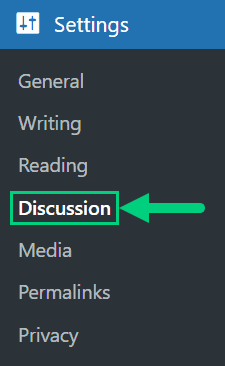
❶ You may want to enable or disable comments on this page. You can also disable pingbacks and enable comment moderation.
❷ You can also set comment approval settings.
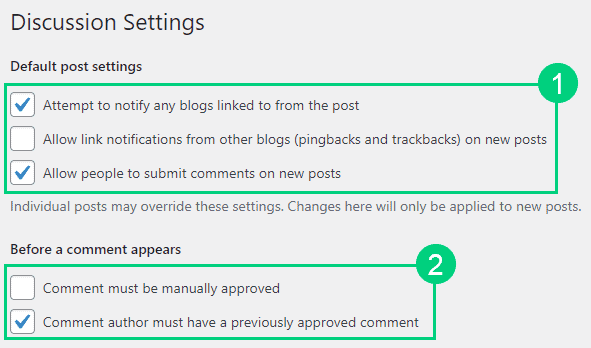
If you want to design your blog further, check out our dedicated guide on blog design which has all our best blog design recommendations.
Create Static Pages
There are a few essential pages that you need to create for your lifestyle blog before you can start blogging.
Use pages in WordPress to add static content. Go to WP Dashboard > Pages > Add New.
- Write the headline of your content.
- Populate the body content
- Click the publish button.
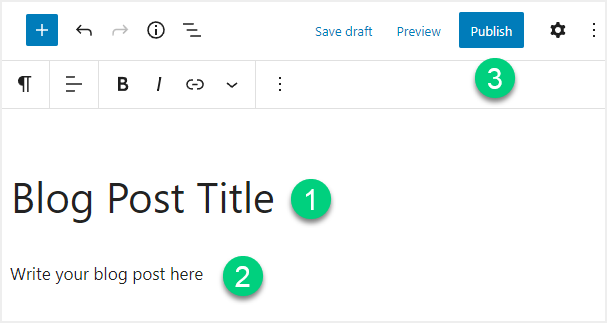
You may want to create the following pages:
Home Page
A home page is the first page that your website visitors see when they visit your website. It is usually a custom page that you create, and it can include information about your blog, your biography, and your contact information.
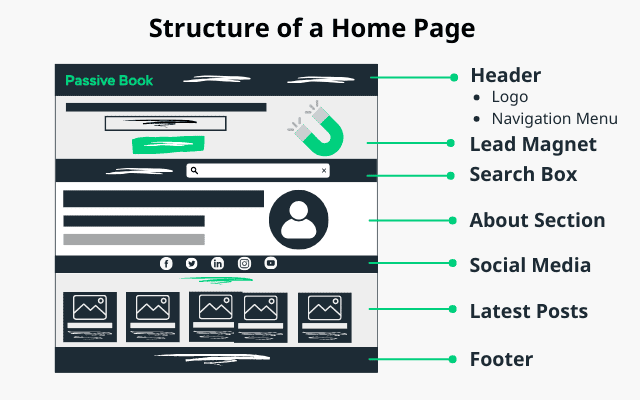
You can create a professional home page for your lifestyle blog using a page builder like Thrive Architect.
About Page
An about page is a page that tells your website visitors who you are and what your blog is about. It can include information about your story, background, your credentials, and your contact information.
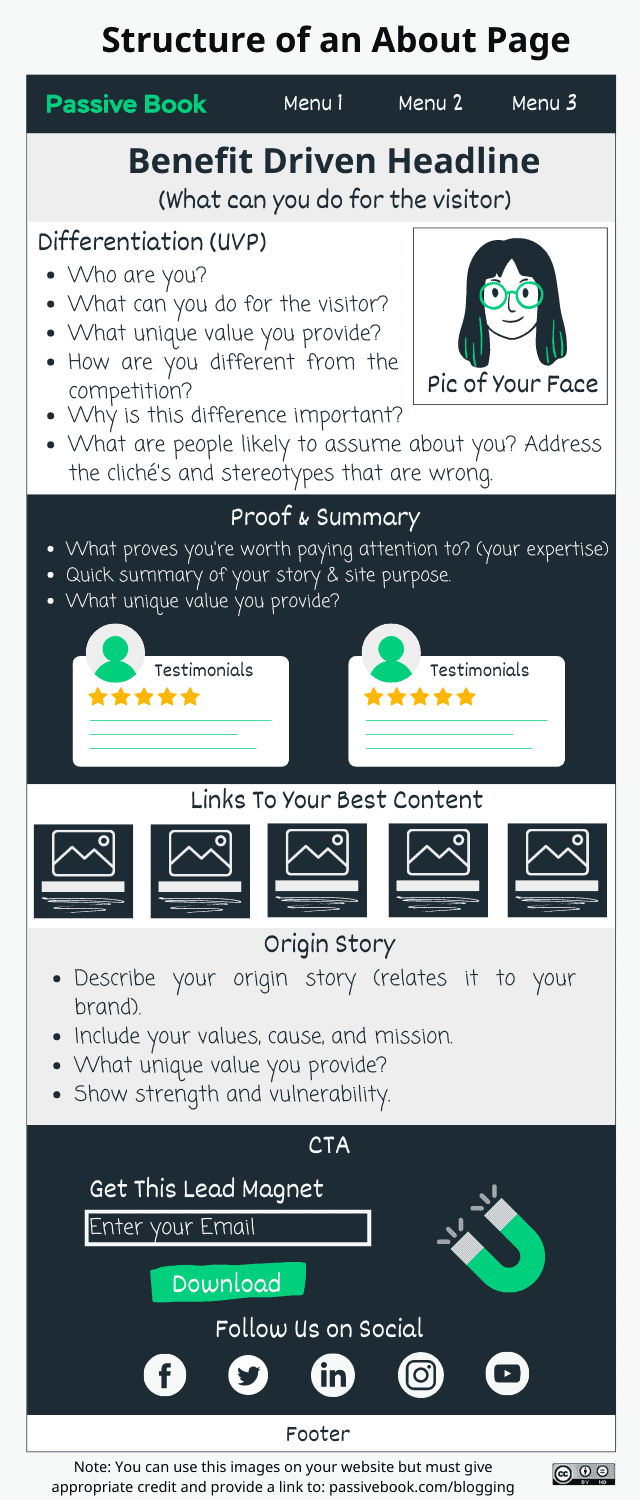
Contact Page
A contact page is a page where you provide your website visitors with a way to contact you. It can include a contact form, an email address, or a social media profile.
Use contact form plugins like Fluent Forms to create the form on your contact page.
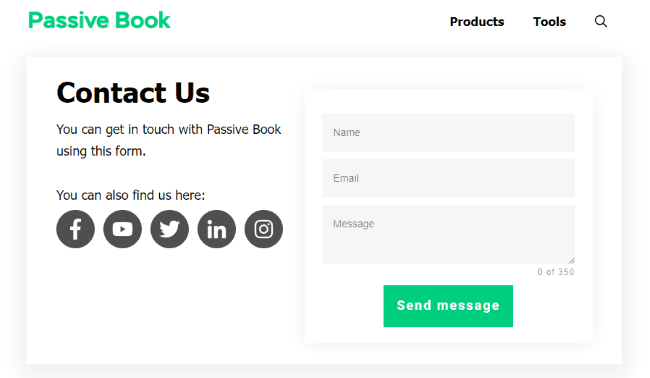
Privacy Policy
A privacy policy is a page where you tell your website visitors how you collect, use, and share their personal information. This page is required if you plan to collect any personal information from your website visitors.
WordPress generates its own privacy policy for you. But you can also use a tool like Termly to generate your own privacy policy.
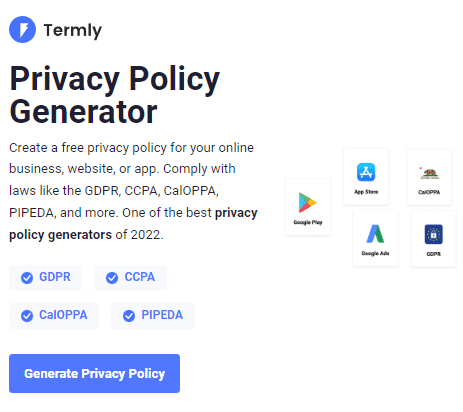
Terms of Service
A terms of service is a page to tell your website visitors what they can and cannot do on your website. This page is required if you plan to allow comments on your blog posts or if you plan to sell products or services on your website.
Use a terms & conditions generator like Termly to create it.
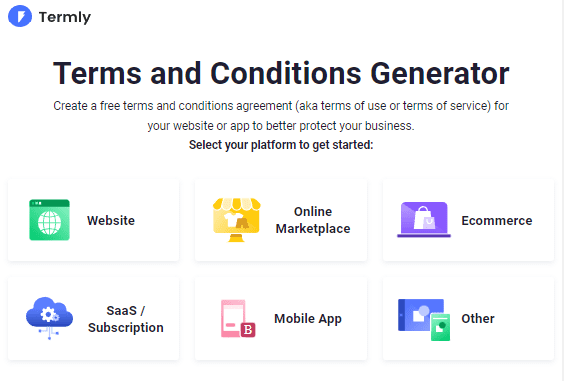
5. Write & Publish Blog Posts
Now that you have your lifestyle blog setup, it’s time to write and publish your first blog post.
1. Brainstorm Topics
You should brainstorm 100 topic ideas for your lifestyle blog. This will ensure that you always have content to write about in your lifestyle blog.
The goal is to find blog post ideas for your lifestyle blog that your audience is searching for in Google. The type of content you write on your lifestyle blog will depend on your specific niche. You can potentially cover the following topics on your lifestyle blog:
- Product Reviews
- Recipes
- Do-It-Yourself Guides
- Organization Tips
- Fashion Tips
- Parenting Advise
- Bucket List
- Travel Essentials
- Your Morning Routine
There are a few ways to brainstorm specific content:
Look at Competitors
When you’re brainstorming topics for your lifestyle blog, it can be helpful to look at the articles your competitors are writing about. This will help you identify the type of content your audience is interested in.
To identify your competitors, you can use Google. Simply enter a keyword from your niche into the tool and it will show you a list of websites that are ranking for that keyword.
Do Keyword Research
When you’re brainstorming topics for your lifestyle blog, you should also do keyword research to find keywords that your audience is searching for in Google.
There are a few tools you can use to do keyword research:
Keywordtool.io – This is a free tool from Google that allows you to enter a keyword and get a list of related keywords.
Answer the Public – This is a free tool that allows you to enter a keyword and get a list of questions people are asking about that topic.
Community & Forums
Another great way to brainstorm content for your blog is to look at forums and online communities where your target audience hangs out. You can use these platforms to see what questions people are asking and what topics they’re interested in.
You can find online communities by doing a Google search or by looking on social media platforms like Facebook and Reddit to find groups and communities around a topic.
2. Create an Editorial Calendar
After you brainstorm topic ideas, you should create an editorial calendar. This will help you plan and organize your content so that you’re always creating content that is relevant to your audience.
Your editorial calendar should include the following information:
- The date you plan to publish your blog post
- The title of your blog post
- The keyword you’re targeting with your blog post
- A list of subtopics you plan to cover in your blog post
There are a few software and tools you can use to create an editorial calendar like Google Sheets, Trello, and Asana.
3. Write a Blog Post
Once you have your editorial calendar created, it’s time to start writing your blog post. We have an in-depth guide on How to Write A Blog Post. Here we will go over specific tips for a lifestyle blog.
Personal stories and experiences
Personal stories and experiences blog post is all about sharing your own life experiences and the lessons you’ve learned from them. This type of blog post allows you to connect with your readers on a personal level and helps them see that they are not alone in their struggles.
Here are a few example blog post titles:
- “How I Overcame My Fear of Public Speaking”
- “The Time I Quit My Job and Traveled the World”
- “Lessons Learned From Losing a Loved One”
- “My Journey to Self-Acceptance”

When writing personal stories and experiences blog posts, it’s important, to be honest and vulnerable with your readers. Share the good, the bad, and the ugly. But also, try to relate your experiences to broader themes so that your readers can take away from it. It’s also important to provide context so that readers can understand your experiences. Try to focus on the positive side of things and avoid complaining or dwelling on the negative.
Tips and advice
Tips and advice blog post type is about providing readers with helpful tips and advice on a variety of topics related to lifestyle, such as health and wellness, beauty, and personal finance. This type of blog post is great for offering practical solutions to problems readers may be facing.
Here are a few example blog post titles:
- “10 Tips for Staying Organized at Home”
- “5 Easy Ways to Start Saving Money”
- “How to Create a Skincare Routine for Sensitive Skin”
- “7 Habits of Highly Effective People”
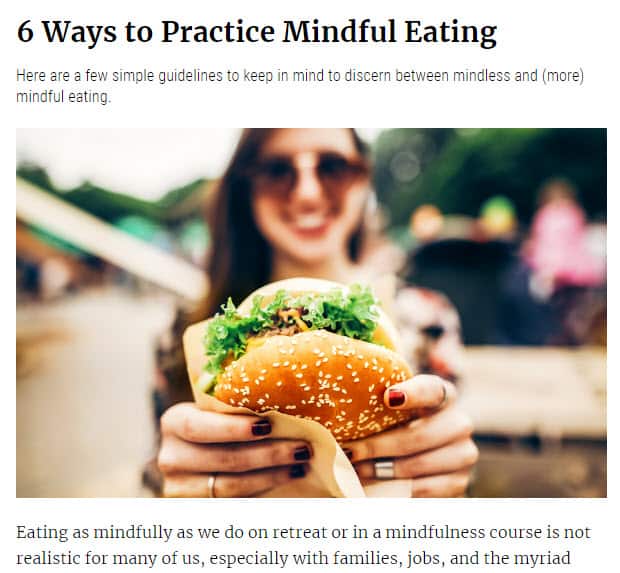
When writing tips and advice blog posts, it’s important to make sure that your tips are practical and easy to implement. Provide specific examples and offer solutions to common problems. Use facts, statistics, and research to back up your advice. Be concise, and use bullet points and lists to make your post easy to read. Don’t hesitate to use your own expertise and experience.
Product reviews
Product reviews blog post type is about sharing your thoughts on the latest products and trends in fashion, beauty, and home decor. This type of blog post is great for helping readers make informed purchasing decisions.
Here are a few example blog post titles:
- “My Review of the New iPhone XS”
- “The Best Affordable Skincare Products I’ve Tried”
- “Why I’m Obsessed with These Leggings”
- “The Ultimate Guide to Buying a Mattress”
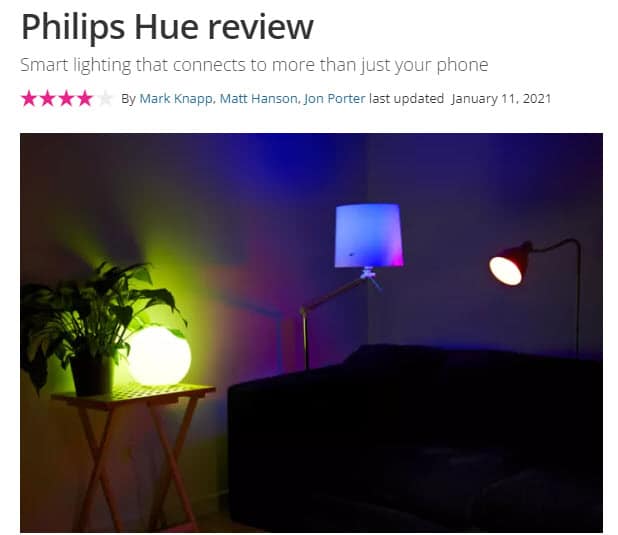
When writing product reviews, it’s important, to be honest and objective. Provide detailed information about the product, including its strengths and weaknesses. Try to put yourself in the reader’s shoes and think about what they might want to know about the product. Be sure to include pictures and links to the product so readers can easily find it. Additionally, include your perspective on the product.
Writing reviews in your lifestyle blog is a great way to make money as an affiliate recommending the products you already use.
To write a review, you will want to:
- Find a product in your niche that you can recommend
- Sign up for the affiliate program
- Write an honest review of the product
- Include your affiliate link in your review
- Promote your review on social media and other platforms
How-to guides
How-to guides blog post type is about creating step-by-step guides on various lifestyle topics, such as how to plan a budget-friendly vacation or how to start a garden. This type of blog post is great for providing readers with detailed instructions for completing a specific task or achieving a specific goal.
Here are a few example blog post titles:
- “How to Plan a Budget-Friendly Vacation”
- “Step by Step Guide to Starting a Garden”
- “DIY Guide to Building a Fire Pit”
- “How to Organize Your Closet on a Budget”
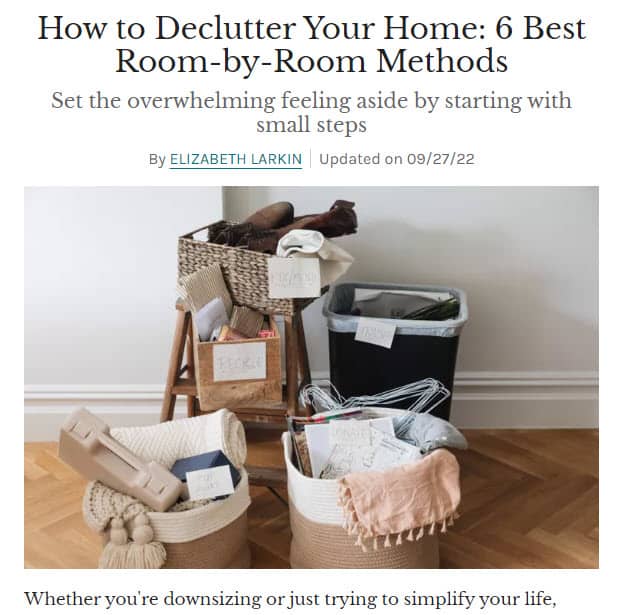
When writing how-to guides blog posts, it’s important to provide clear and detailed instructions, including any tools or materials that may be required. Use images, videos, and visual aids where necessary. Break the instructions down into manageable steps and use numbered lists or bullet points.
Round-ups & Listicles
Round-ups and listicles blog post types are about creating lists of the top products, places, or experiences in a particular category or location. This type of blog post is great for providing readers with a curated selection of options for a specific topic.
Here are a few example blog post titles:
- “The Top 10 Coffee Shops in New York City”
- “The Best Affordable Fitness Classes in Los Angeles”
- “My Favorite Books to Read on a Rainy Day”
- “The 5 Must-Visit Destinations for Foodies in Italy”
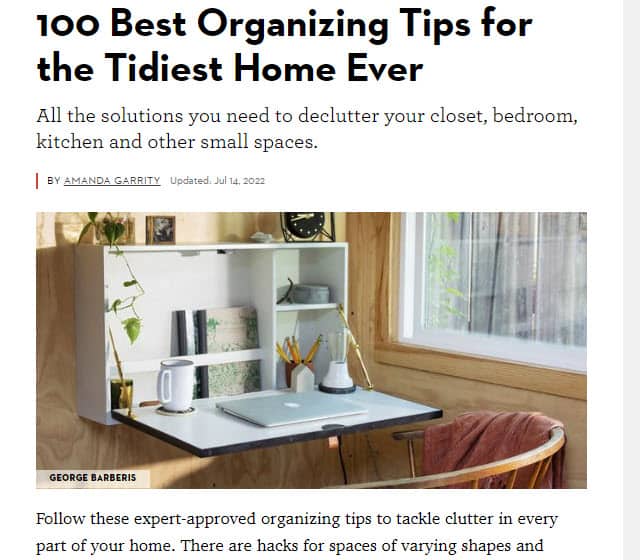
When writing round-ups and listicles, it’s important to research your topic thoroughly and select the highest quality options for your list. Provide a brief explanation of why you chose each item and consider including pictures or links to the products or places you mention. Be consistent in your criteria and order them accordingly. Keep your audience in mind and tailor your lists accordingly.
Opinion Pieces
Opinion pieces blog post type is about sharing your perspective on current events or trends in the lifestyle world. This type of blog post is great for encouraging discussion and debate among readers.
Here are a few example blog post titles:
- “Why I Think Social Media is Harmful to Our Mental Health”
- “My Opinion on the State of Fashion Today”
- “The Pros and Cons of Veganism”
- “Why I Support the Fight Against Climate Change”

When writing opinion pieces, it’s important to be clear and assertive in your viewpoint. Do research and provide evidence to back up your opinion. Be respectful of differing viewpoints, and avoid personal attacks on those who disagree with you. Encourage constructive discussion and debate in the comments section. and make sure to be open-minded.
Travel Posts
Travel posts blog post type is about sharing your travel experiences, tips, and suggestions for places to visit. This type of blog post is great for providing readers with inspiration for their next vacation or providing a virtual experience for those who are unable to travel.
Here are a few example blog post titles:
- “A Guide to Exploring the Streets of Paris”
- “My Favorite Restaurants in Tokyo”
- “The Best Beaches in Thailand”
- “A Weekend Getaway to Napa Valley”

When writing travel posts, it’s important to provide detailed information about the destination, including practical tips such as where to stay, where to eat, and what to see and do. Use pictures and videos to provide a visual representation of your experience. If you are reviewing hotels, restaurants or other services provide a balanced view and be specific on what you liked or didn’t like.
Recipes and Cooking Tips
Recipes and cooking tips blog post type is about sharing your favorite recipes, cooking tips, and suggestions for healthy eating. This type of blog post is great for providing readers with inspiration for their next meal or encouraging them to cook more at home.
Here are a few example blog post titles:
- “How to Make the Perfect Pasta Carbonara”
- “5 Easy Vegan Meals for a Busy Weeknight”
- “My Favorite Healthy Snack Recipes”
- “10 Tips for Mastering the Art of Grilling”
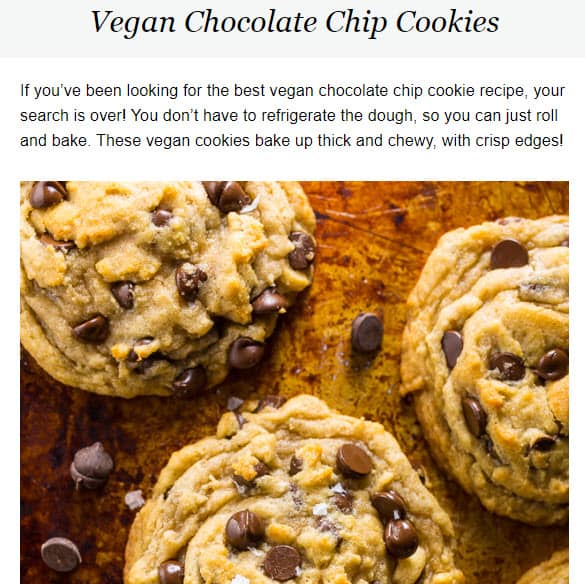
When writing recipes and cooking tips, it’s important to provide clear and detailed instructions, including a list of ingredients and their measurements. Use pictures and videos to show the finished product. If you are suggesting tips, be specific and provide clear explanations. Try to include variations and substitutions, and nutritional information if possible.
If you’re writing a recipe, there are a few things you should include:
- The name of the dish
- A photo of the dish
- A list of ingredients
- Instructions on how to make the dish
- Your personal experience with the dish
- Pros & cons of the dish
- Your rating of the dish
DIY Projects and Tutorials
DIY Projects and tutorials blog post type is about sharing your own DIY projects and tutorials. This type of blog post is great for providing readers with inspiration and ideas for their own DIY projects, as well as step-by-step instructions for completing a specific task or achieving a specific goal.
Here are a few example blog post titles:
- “DIY Guide to Building a Fire Pit”
- “How to Make Your Own Candles at Home”
- “Upcycling Old Clothes into a New Outfit”
- “A Step-by-Step Guide to Building a Raised Garden Bed”
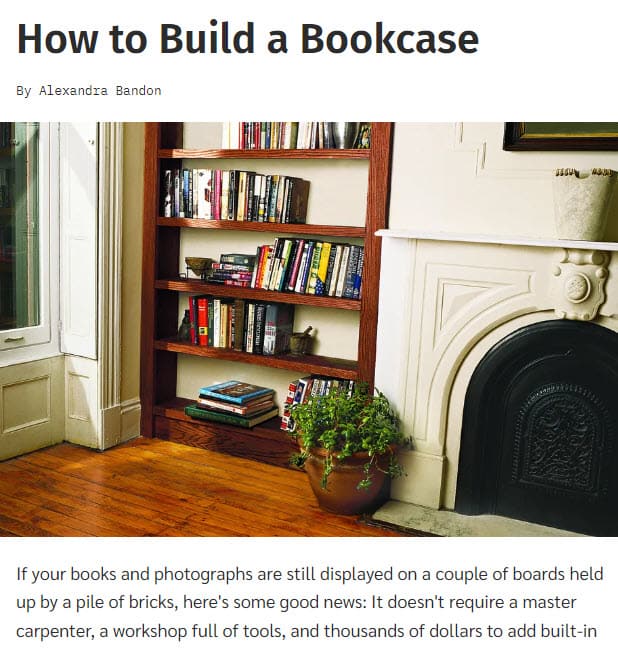
When writing DIY Projects and tutorials, it’s important to provide clear and detailed instructions, including a list of materials and tools needed. Use pictures, videos, and visual aids to help readers understand the instructions. Break the instructions down into manageable steps and use numbered lists or bullet points. Try to include tips and tricks for completing the project successfully and anticipate problems that readers may encounter.
If you’re writing a do-it-yourself guide, there are a few things you should include:
- The name of the project
- A photo of the project
- A list of materials needed for the project
- Instructions on how to complete the project
- Your personal experience with the project
- Pros & cons of the project
Interviews
Interviews blog post type is about interviewing experts in various lifestyle fields to provide readers with valuable insights and information. This type of blog post is great for providing readers with new perspectives and a deeper understanding of a particular topic or industry.
Here are a few example blog post titles:
- “An Interview with a Successful Entrepreneur”
- “A Conversation with a Leading Nutritionist”
- “Insights from a Fashion Designer on the Future of the Industry”
- “Advice from a Travel Writer on How to Make a Living While Seeing the World”
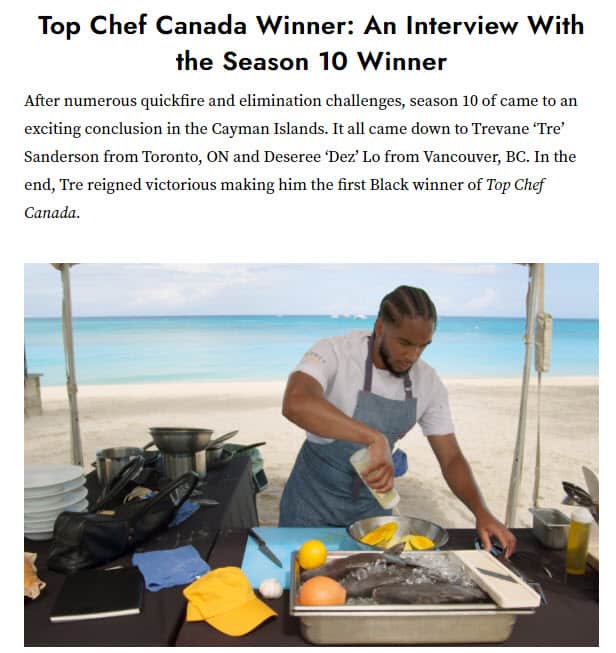
It’s important to prepare a list of questions beforehand and select the right person to interview. The person you are interviewing should be an expert on the topic you are discussing. During the interview, try to keep it as conversational as possible and record the interview if possible. After that, transcribe the interview and edit it for clarity and concision. Keep in mind what your readers are most interested in learning from the interview.
Write 5x Faster with AI
You can write your new blog post at 5x speed using the AI writing software Jasper. I was able to write over a hundred blog articles in 3 months using Jasper. This blog article you are reading right now was written with the help of Jasper. AI will not only help you write blog posts fast but also with higher quality.
Jasper can write plagiarism-free blog content, articles, social media content, emails, and ad copy. All you have to do is provide a few inputs on what you want and Jasper will do all the hard work of creating the blog content for you. No more writer’s block.
Check out the video below to see Jasper in action:
Try Jasper for free using the links on this page and get 10,000 bonus credits you can use to start writing your first articles.
Once you sign up for Jasper I recommend you spend some time going through the tutorial videos in the Jasper Bootcamp to truly unlock the power of this amazing software.
Check out our guide on How to Write a Blog Post Fast in 15 mins Without Losing Quality for more tips to write fast.
Outsource Writing
If you don’t have the time or energy to write your own blog posts, you can outsource writing services from a freelance writer.
When looking for a freelance writer, you will want to:
- Check out their portfolio
- Look for writers who have experience with your niche
- Read reviews from previous clients
- Get a sense of their writing style
- Make sure they are available when you need them
When working with a freelance writer, you will want to:
- Provide them with your editorial calendar
- Give them specific instructions on what you want to be included in the blog post
- Set a deadline for when you need the blog post delivered
There are many sites where you can find freelance writers, such as Upwork and Fiverr.
4. Add Images
To make your blog post more visually appealing, you should add images and videos. To make your blog truly stand out you can take your own photos. You can start by using a smartphone camera.
If you can’t take your own photographs, you can use stock photography. You can use the following websites:
Free Options: Pixabay, Pexels, Upsplash
Paid Options: Deposit Photos, Shutterstock, iStock, Getty Images, 123rf.
Edit your images on Canva. If you get Canva Pro you will not only unlock a lot of features but will have unlimited royalty-free access to millions of stock photos.

6. Promote Your Lifestyle Blog
After you have created your blog post, it’s time to start promoting it to drive traffic to your blog. There are many ways you can promote your blog post:
Search Engine Optimization (SEO)
One of the ways to drive traffic to your lifestyle blog is through SEO. You can optimize your blog post by:
- Adding keywords throughout your blog post
- Creating backlinks to your blog posts
Many factors go into SEO, and it can be a bit confusing to figure out where to start. You can master the more advanced SEO tactics by checking out our SEO Resources.
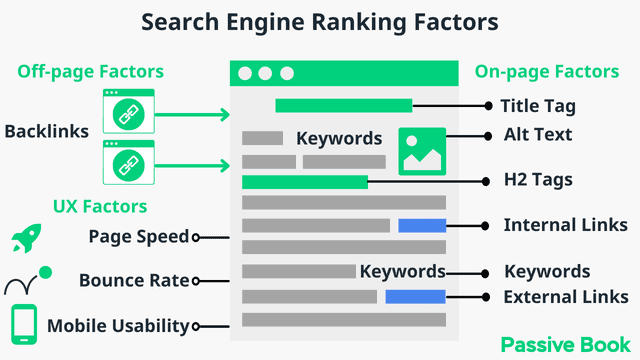
You can ensure you get the basics of SEO right, by completing the recommendations given by the RankMath plugin.
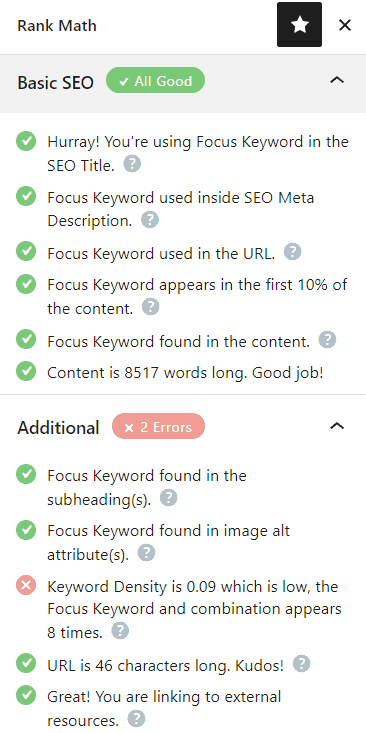
Email Marketing
Email is a really good way to promote your blog post. You can email your subscribers and let them know about your latest blog post. You however need to first build your email list by collecting emails from your blog posts.

You can use the Thrive Leads plugin to build opt-in forms to collect email addresses. You can then connect the opt-in form to an email marketing service like Active Campaign to send out the emails.
Check out our Email Marketing resources to learn more.
Social Media Marketing
Another great way to promote your lifestyle blog is through social media. You can share your blog post on platforms like Facebook, Twitter, Instagram, and Pinterest. Know where your audience spends their time and then focus on just one platform.
Guest blogging
Guest blogging is when you write a blog post for another person’s blog. This is a great way to get your name and your blog out there.
You can find guest blogging opportunities by searching Google & reaching out to other successful lifestyle bloggers in your niche.
Guest blogging is a great way to get your content in front of a new audience. You can write guest posts for other blogs in your niche. This will help to increase your reach and attract new readers to your site. You can also promote and link back to your blog from your author bio.
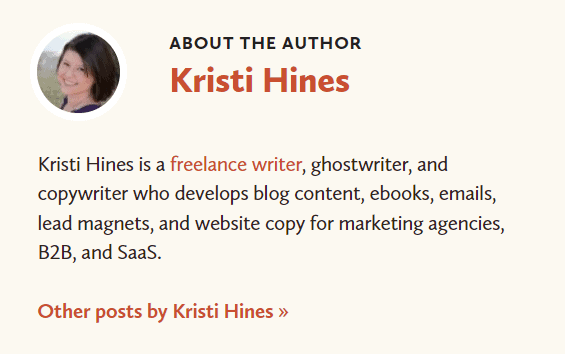
7. Monetize & Make Money
There are a few ways you can make money from your lifestyle blog:
Advertising
One way to make money from your lifestyle blog is through advertising. You can join an ad network and then place ads on your blog. When someone clicks on one of your ads, you will earn money.
To start advertising on your blog, you can sign up for an ad network like Ezoic (they pay more than Google Adsense). When your blog starts getting more than 100,000 page views a month you can monetize with Adthrive.
| Ad Network | Earnings Per 1K Impressions (EPM) | Monthly Traffic Requirement |
|---|---|---|
| Ad Thrive | $13 | 100,000 |
| Ezoic | $3 | 10,000 |
| Media.net | $1 | – |
| Google Adsense | $1 | – |
Affiliate Marketing
Another way to make money from your lifestyle blog is through affiliate marketing. This is when you promote someone else’s product or service on your blog and if someone buys the product or service, you earn a commission.
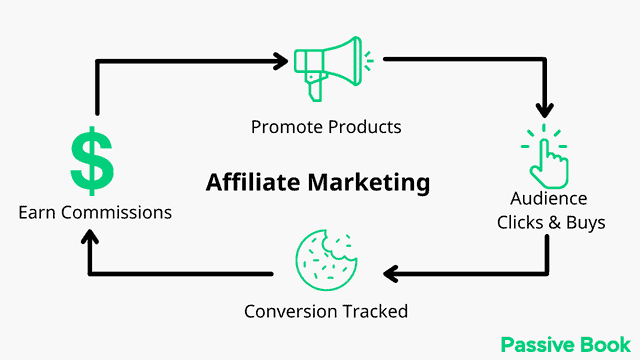
There are a few things you need to do to be successful with affiliate marketing
- Find the right affiliate products or services to promote
- Create helpful blog posts that include your affiliate links
- Promote your blog posts on social media & other channels
Sell a Product
Another way you can make money from your lifestyle blog is by selling a product. This could be a digital product like an ebook or an online course.
You can use Teachable if you want to sell video courses. Your students will have a dedicated course members area and a community system to ask questions and interact with each other. If you only want to sell eBooks, you can use SendOwl which lets you sell your digital products and eBooks for free.
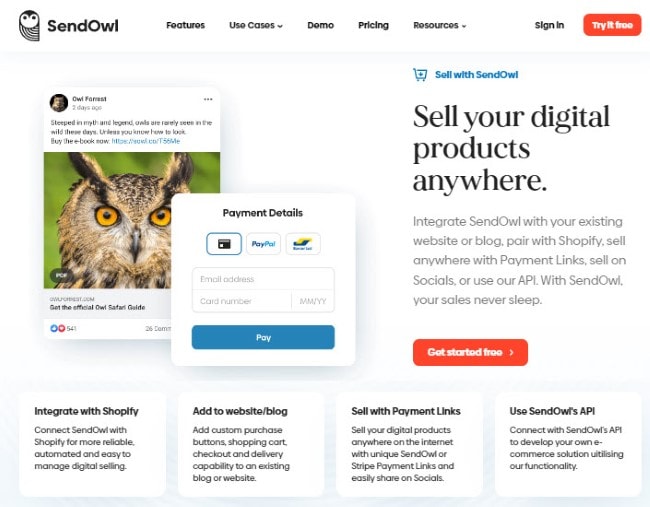
If you want to sell a physical product, you will need to set up a store on your blog and then source products from a supplier.
Sell Services
Another way to make money from your lifestyle blog is by selling services. This could be anything from coaching to web design.
If you want to sell services, you will need to set up a sales page on your blog and then start promoting your services. You can also use Clarity.fm.
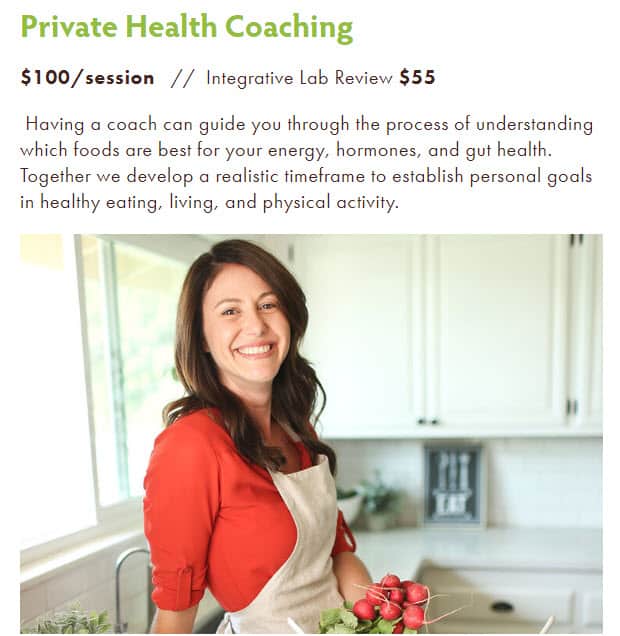
Sponsored Posts
A sponsored post is when a company pays you to write a blog post about its product or service.
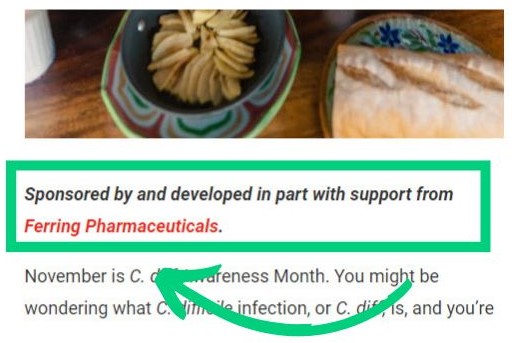
The key to getting sponsored posts is to have a popular blog with a good reputation. You will also need to reach out to companies and pitch them your idea for a sponsored post.
FAQ
Here are a few frequently asked questions about starting a lifestyle blog:
How do lifestyle blogs make money?
There are a few ways to make money from lifestyle blogs which include advertising, affiliate marketing, selling products, selling services, and sponsored posts
What do you write in a lifestyle blog?
When writing a lifestyle blog, you can write about anything that interests you. Some popular topics include travel, food, fashion, beauty, DIY, home decor, and parenting.
How often should I post on my lifestyle blog?
This will depend on your goals but most bloggers aim to publish 1-2 times per week.
What Next?
Are you ready to become a lifestyle blogger?
If you have any questions as you set up your new lifestyle blog, leave a comment below so we can help you out.
Starting a lifestyle blog can be a great way to share your passion with the world & make some extra money.
If you follow the steps in this guide, you’ll be well on your way to starting a successful lifestyle blog.
Have you started your lifestyle blog yet? What type of lifestyle blog are you going to start? Let us know in the comments.
Share this post with your friends & followers:
